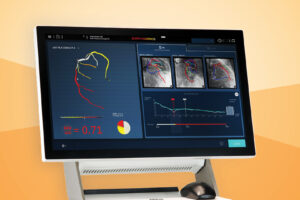You might dismiss the warning signs: The strange chest pressure when you race to meet a deadline. The unusual difficulty breathing during your morning run. Bouts of nausea and fatigue. You blame it on stress, a hectic schedule, or even the latest flu virus.
It couldn’t possibly be your heart. Or could it?
Heart disease is the No. 1 killer of women in the United States. Yet women often miss the more subtle signs of heart attack.
“People don’t always realize that there are gender differences in heart disease presentation,” says CentraState internal medicine physician Aileen Estavillo, MD. “Any symptom above the waist that is unusual for a woman could be a sign of heart disease. Arm pain, sudden onset of dizziness, or cold sweats could be due to a heart attack and should Stroke symptoms, such as being unable to speak, are more obvious, she says. You can help protect yourself by knowing your risk factors and the symptoms of heart disease in women.
What are the risk factors?
Risk factors for cardiovascular disease, which includes heart attack and stroke, are diabetes, obesity, high blood pressure, high cholesterol, kidney disease, and a family history of cardiovascular disease. Inactivity, smoking, and chronic stress also contribute to your risk.
What are the symptoms?
Although some women have no symptoms of heart disease, others may experience typical symptoms like chest pain, pressure, or discomfort – or atypical symptoms such as upper back or neck pain, jaw or throat pain, shortness of breath, nausea, and vomiting. Stroke symptoms include sudden weakness on one side of the body, severe headache, blurred vision, and trouble speaking.
When should you seek help?
If you have symptoms or risk factors, get assessed by your primary care doctor or a cardiologist. After a physical exam and bloodwork, screenings may include a 24-hour Holter monitor test (which can identify an irregular heartbeat), EKG, treadmill test, echocardiogram (ECG), or calcium-score heart scan. “A new finding or a change in an ECG can signal a heart attack,” says Dr. Estavillo. “In addition, a blood test to check for elevations in cardiac enzymes can help diagnose ongoing damage to the heart.”
How can you prevent cardiovascular disease?
Risk factors such as diabetes and high cholesterol can be managed with help from your doctor. You can also lower your risk by exercising, eating a healthy diet, and reducing emotional stress. “Choosing healthy habits and knowing your numbers – such as blood pressure and cholesterol levels – are keys to heart health,” says Dr. Estavillo. “Seeing your primary care doctor at least once a year for an annual exam is essential.”
To learn more about the Gloria Saker Women’s Heart Program at CentraState, visit centrastate.com/womensheart or call 866-CENTRA7 (866-236-8727).
Call 9-1-1 and get to the hospital if you experience:*
- Pressure or pain in the center of your chest that lasts more than a few minutes or goes away and comes back
- Shortness of breath
- Arm, back, neck, jaw, or stomach pain
- Nausea/vomiting
- Sudden confusion or trouble speaking
- Sudden, severe headache
- Sudden numbness or weakness of the face, arm, or leg
*Source: American Heart Association





